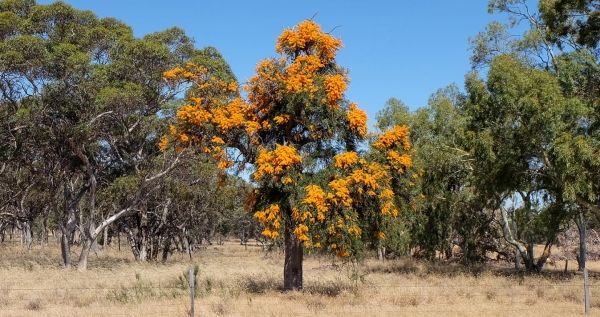A closer look at DNA from south-western Australia’s native Nuytsia floribunda, known as the WA Christmas Tree, has found that temperature, rather than rainfall, impacts the tree’s resilience and reproductive success.
The WA Christmas Tree is the largest parasitic plant in the world, obtaining its water and nutrients from host plants using a specialised structure called a haustorium to attach its own root system to the roots of others.
Lead researcher Curtin PhD candidate Sheree Walters from the ARC Centre for Mine Site Restoration said that the latest DNA sequencing techniques were used in the study, which compared the WA Christmas tree to the non-parasitic Swamp Paperbark tree (Melaleuca rhaphiophylla) to determine if the different ways they acquire water affected their adaptation to climate.
“Traditionally, we would have used common garden studies to collect this data, so basically growing the different tree populations in the same area to compare growth and survival under the same environmental conditions,” Ms Walters said.
Read more at Curtin University
Image: Nuytsia floribunda, also known as the WA Christmas Tree, in flower. The flowers are yellow/orange in color. (Credit: Curtin University)


